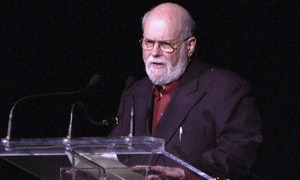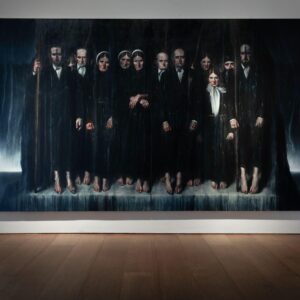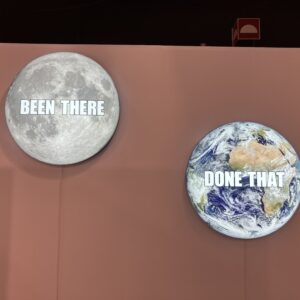
The question of value in art presupposes an idea of what art is, since to value something is to recognise certain qualities that are worthy of appreciation and can be given a price. The philosopher Arthur C Danto provided two theoretical tools for approaching the question of value: first, he defined art in terms of the history and theory inherent in the artworld; and second, he declared the end of art. Value, it has to be said, was not Danto’s main concern, but his philosophy of art, characterised by these two ideas, provide us with a way of thinking about how we may understand the relationship between cultural and economic value.
Danto’s greatest intellectual achievement was to provide the most innovative, plausible and sustained answer to the question, ‘what is art?’. His seminal essay, ‘The Artworld’ (1964), written after seeing Warhol’s Brillo Boxes at New York’s Stable Gallery, argued that a work of art is defined by the operations of an interconnected network of professionals who comprise the artworld. This formed the impetus for George Dickie’s Institutional Theory of Art. Danto, however, went on to refine his theory in his groundbreaking book The Transfiguration of the Commonplace (1981), in which he argued that works of art such as Warhol’s Brillo Box differ from an ordinary Brillo box, not in respect of any physical qualities that can be discerned with the eye, but in terms of the aura of history and theory in the artworld context. The difference between Warhol’s Brillo box and an ordinary one in the supermarket was that the former has a theory of art attached to it, which informs how we perceive it. As such, Danto’s revolutionary philosophy of art was to be able to explain innovations in modern and contemporary art, culminating in his radical reading of Hegel’s ‘end of art’ thesis, where he pronounced that art history had ended with Warhol. This thesis, which he defended right up to his death, is eloquently expressed in After the End of Art (1997). The idea here is that art after Warhol is ‘beyond the pale of history’ insofar as history no longer dictates what can or cannot be an artwork; the end of art is the beginning of an ‘anything goes’ phase in which anything can be art and history is no longer present as the gatekeeper.
Danto’s central gift was the originality and finesse with which he could apply philosophical insights to the reality of the art of his time. He was a keen art-lover with a passion for Pop Art, minimalism and conceptual art who, throughout his lifetime, tackled head-on every new challenge that contemporary art could present to philosophy. The Transfiguration of the Commonplace is and remains the last great work to have been written on the subject of philosophical aesthetics. Clement Greenberg, for example, had serious problems dealing with painting after modernism had faded, since there was no longer the purity of the medium upon which his entire theory stood. Danto, however, could accommodate every innovation in art with his notions of the artworld and an insistence of its post-historical character.
The end of art thesis helps us to grasp how art gradually became so embroiled in its own market. Once history is no longer the sole defining factor and anything can be a work of art, the range of commodities available on the market expands indefinitely; suddenly, the post-historical mood gives rise to the production line that we now know as the commercial galleries and the artists’ studios. The reason that this expanding market is able to sell us unmade beds, for example, is found in Danto’s idea of the artworld: it is not the case that anything can be art with no reason or justification, but that all these innovations are produced in an artworld that nonetheless has history and theory as its defining feature. Therefore, the market – itself a part of the artworld infrastructure – draws on the manifold resources of the artworld to explain these post-historical artefacts that it is selling. In this sense, the value of art is a theoretical construct, but not an arbitrary one that is plucked from the ether; rather, value is concocted out of theory from within the artworld itself.
Danto once described Warhol as ‘some kind of Midas’ turning to artworld gold the ordinary stuff of daily life. It was here, with Warhol in practice and Danto in theory, that the art market we now have began, for the value of art became less a matter of anything the eye could discern and more a matter of the intellectual acumen that could be imputed a work on the market. Danto was the Midas of philosophy who turned to gold all the ideas we had been struggling with for so long. Anyone who seriously approaches philosophical aesthetics and the art of the last century will, sooner or later, incur and recognise a considerable debt to Danto, unless they wish to forever be mired in error.
Words: Daniel Barnes



